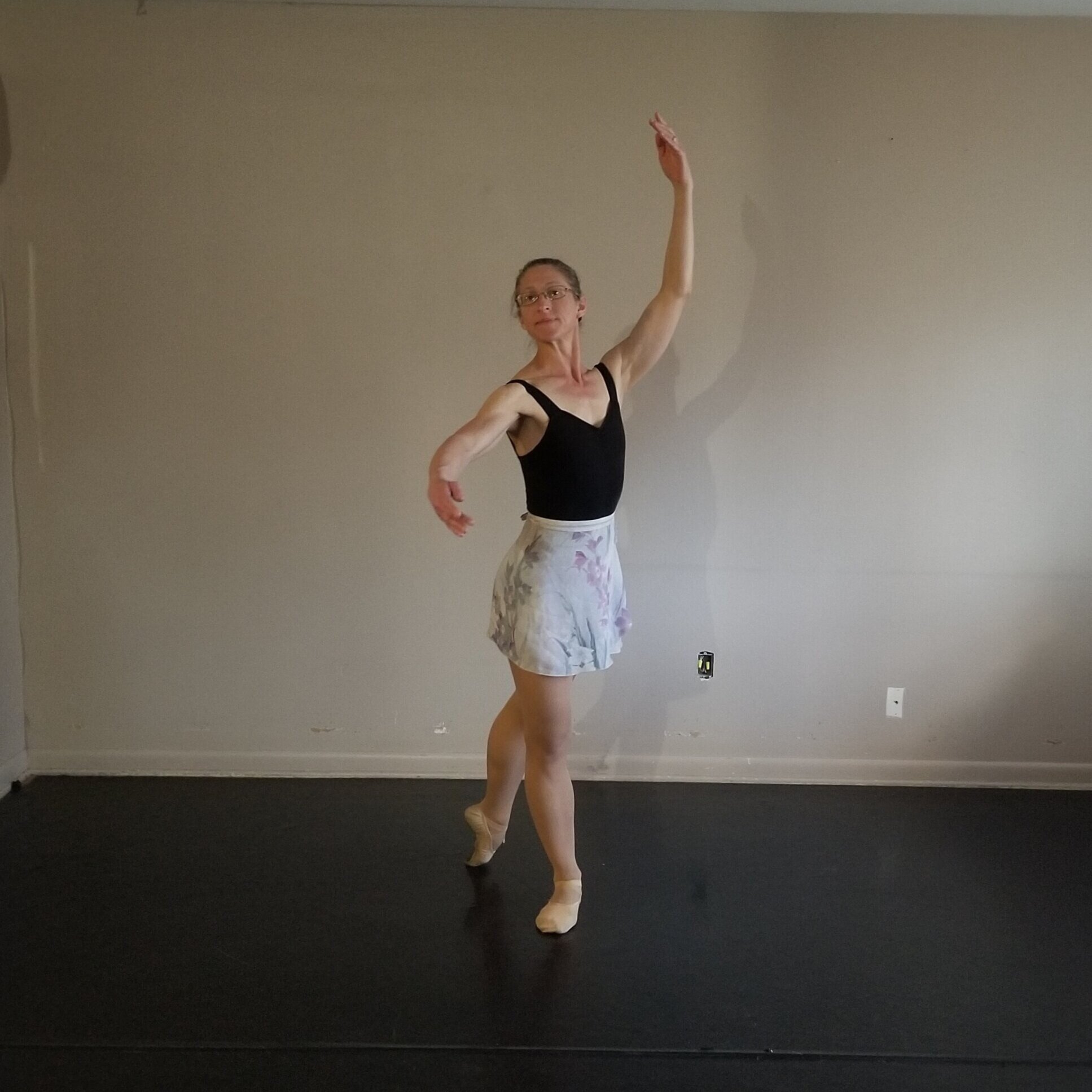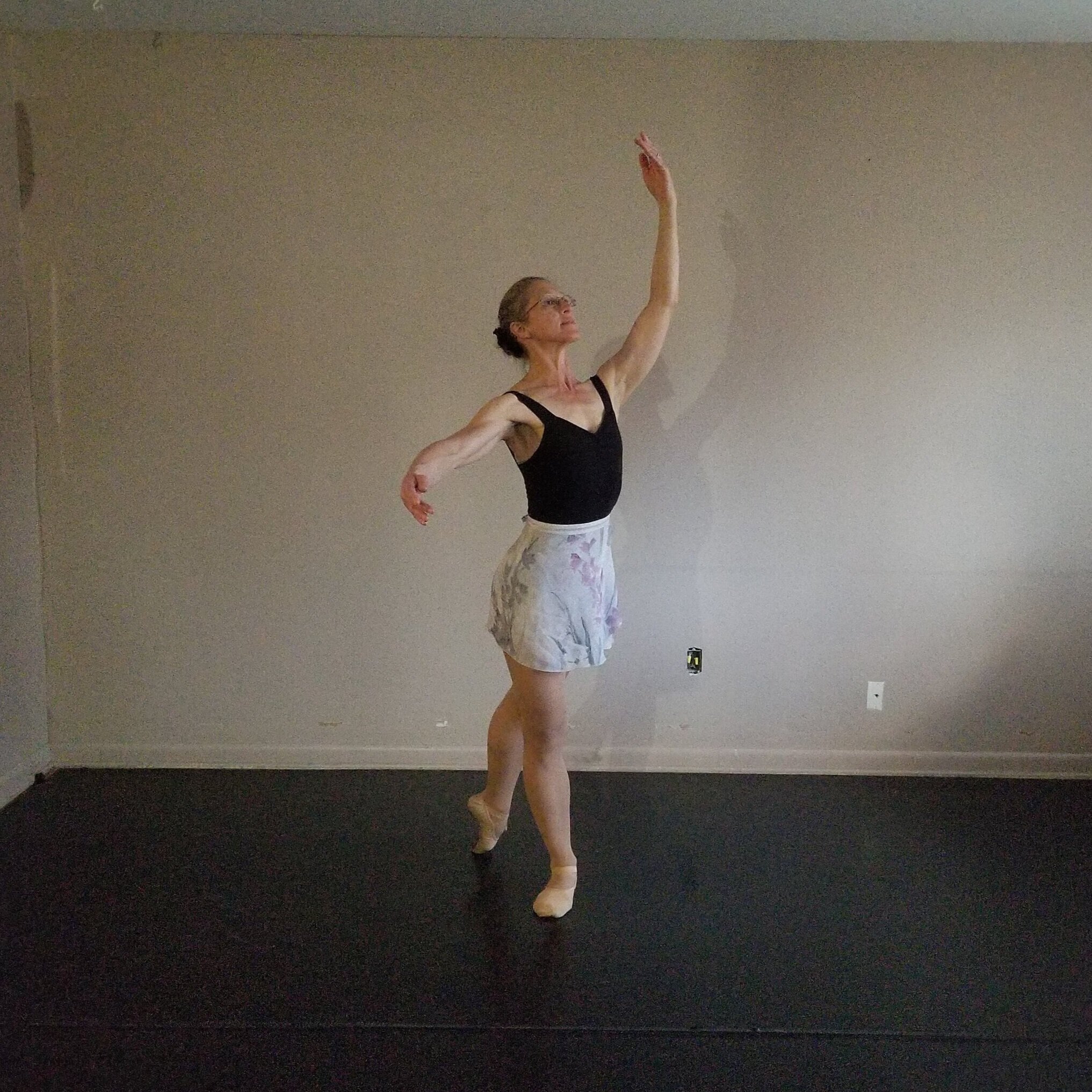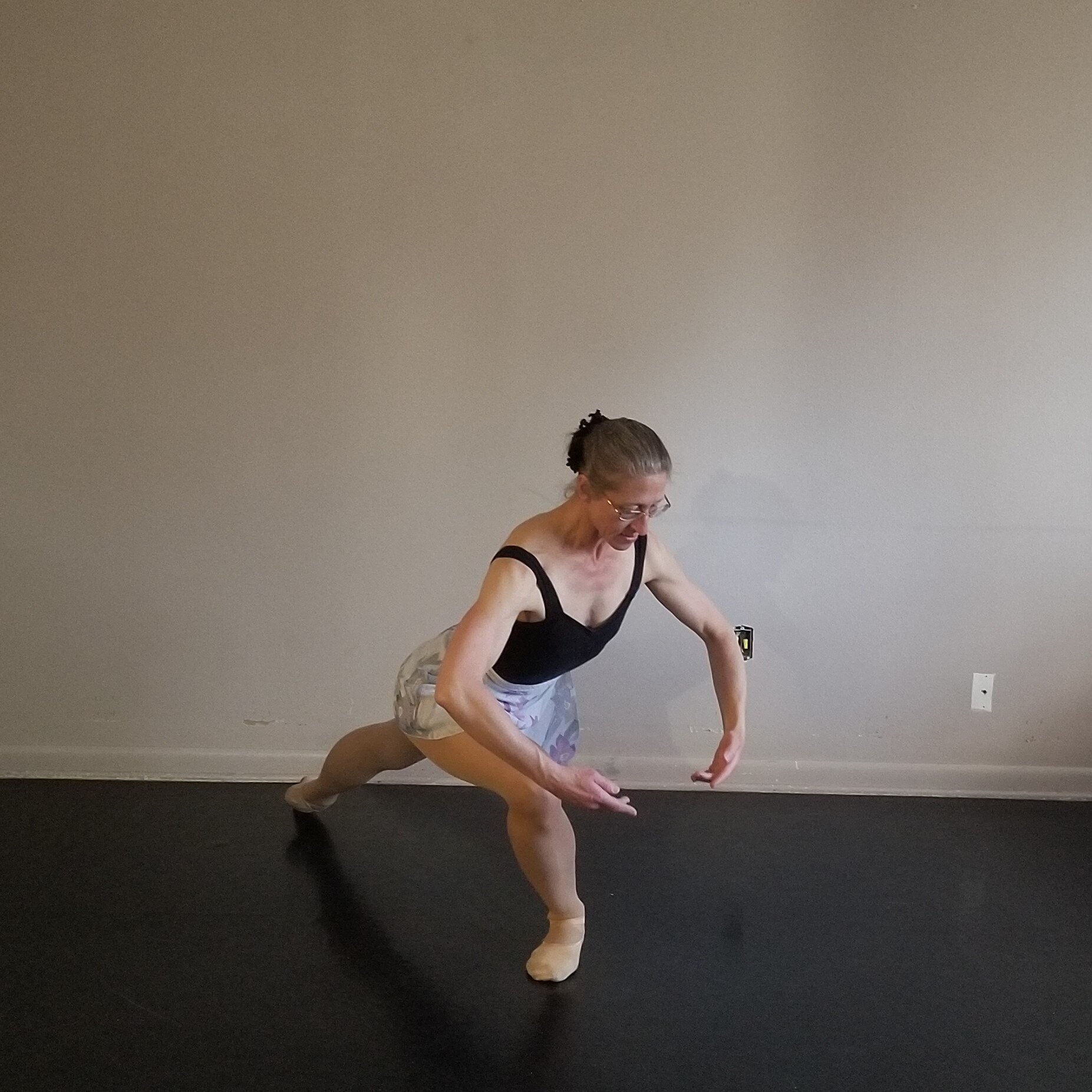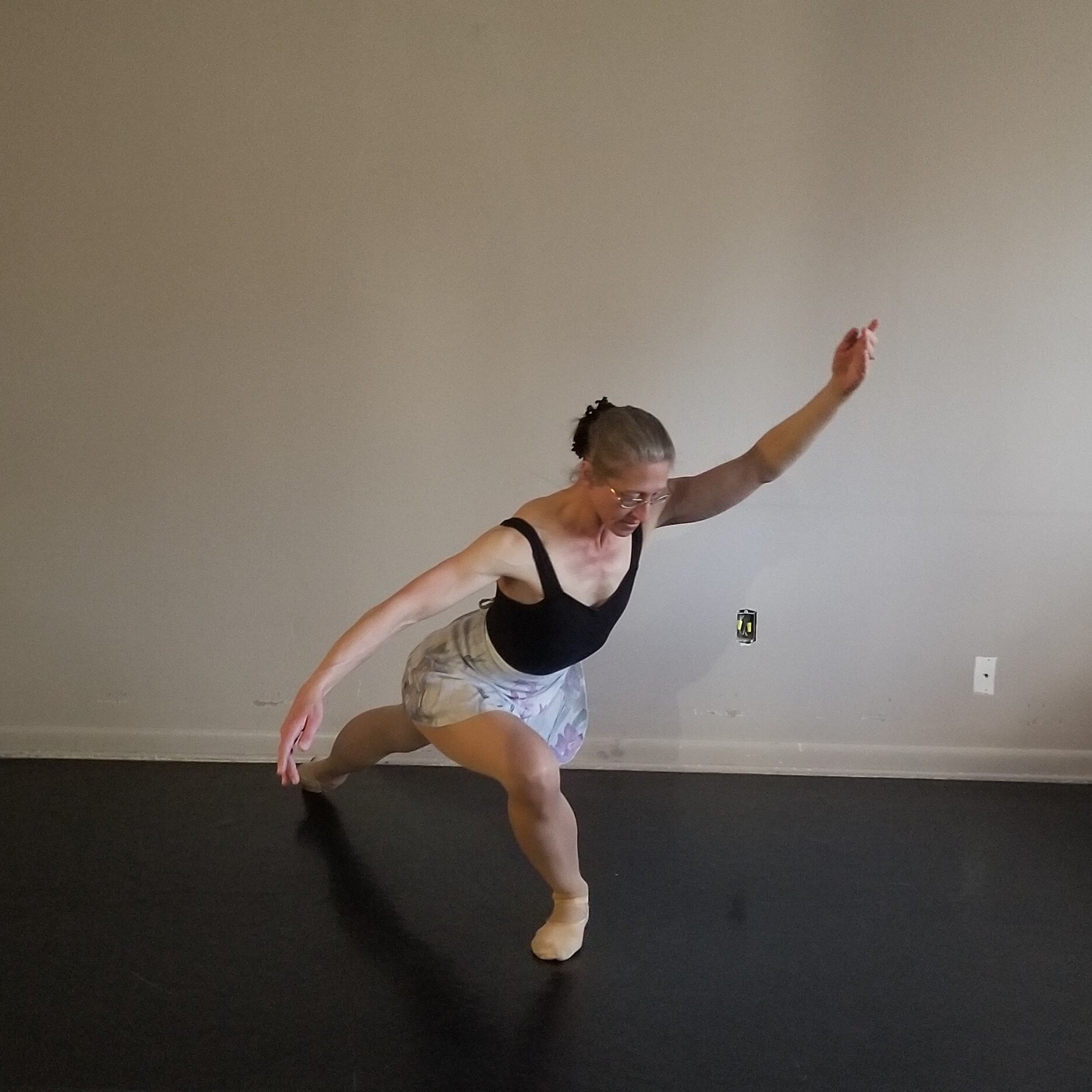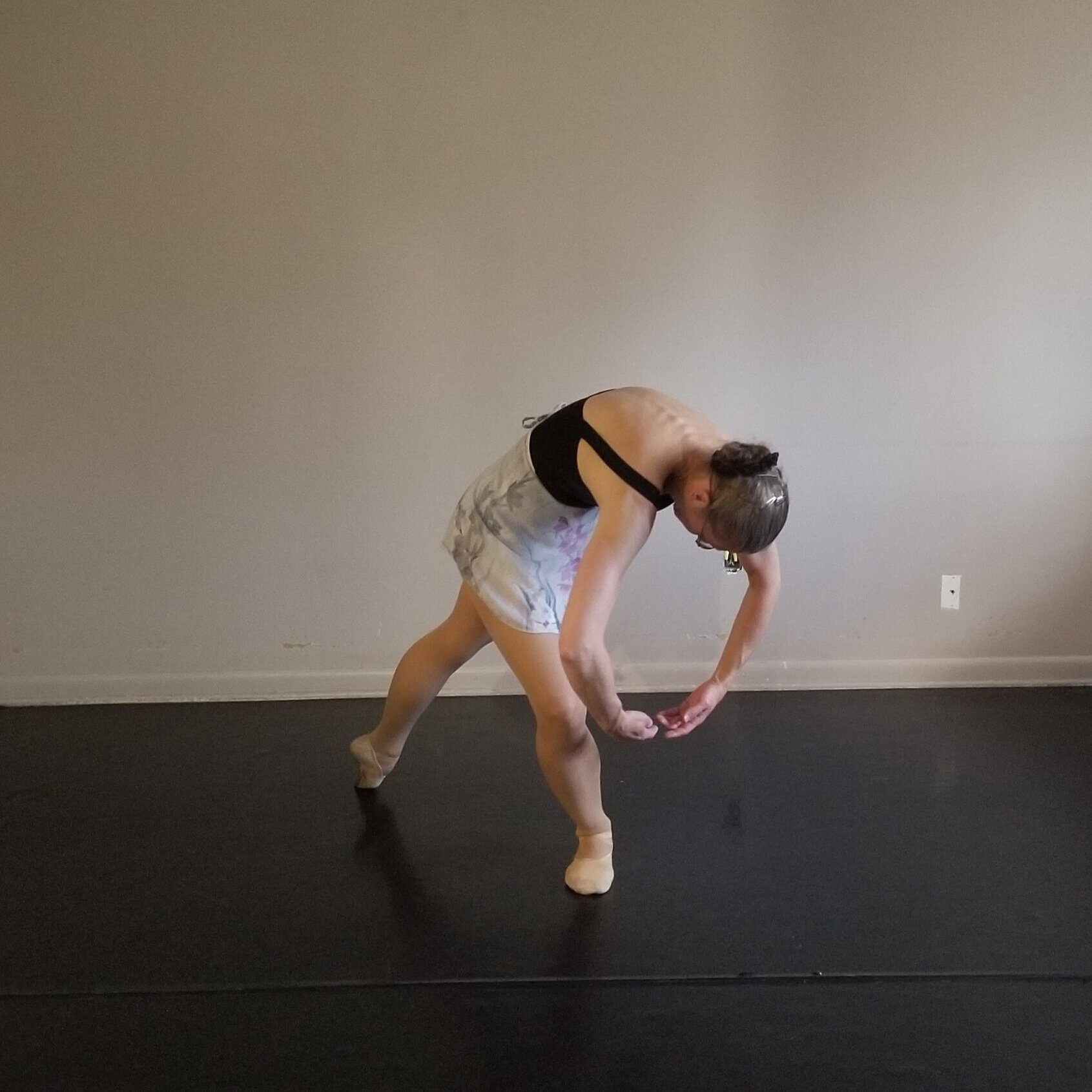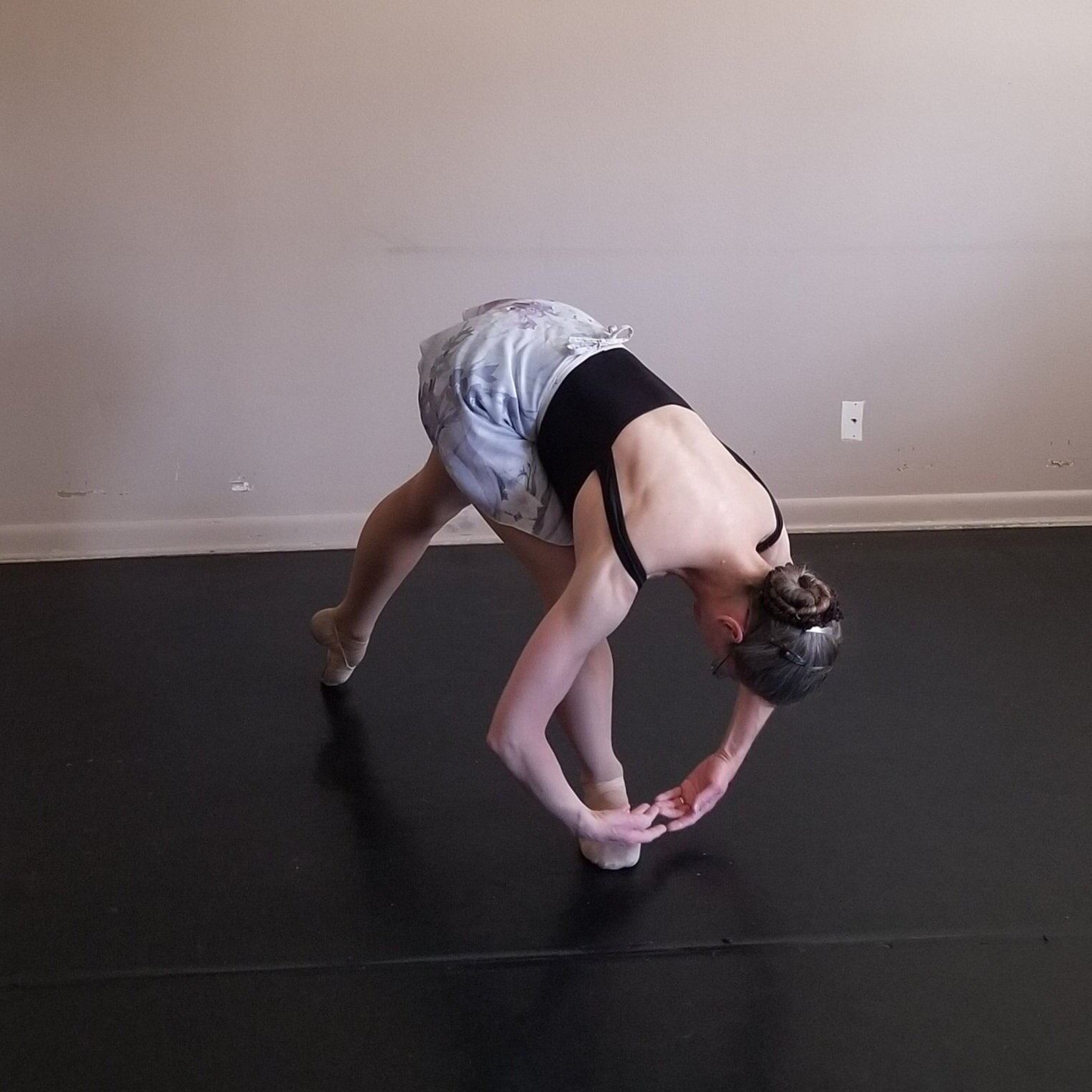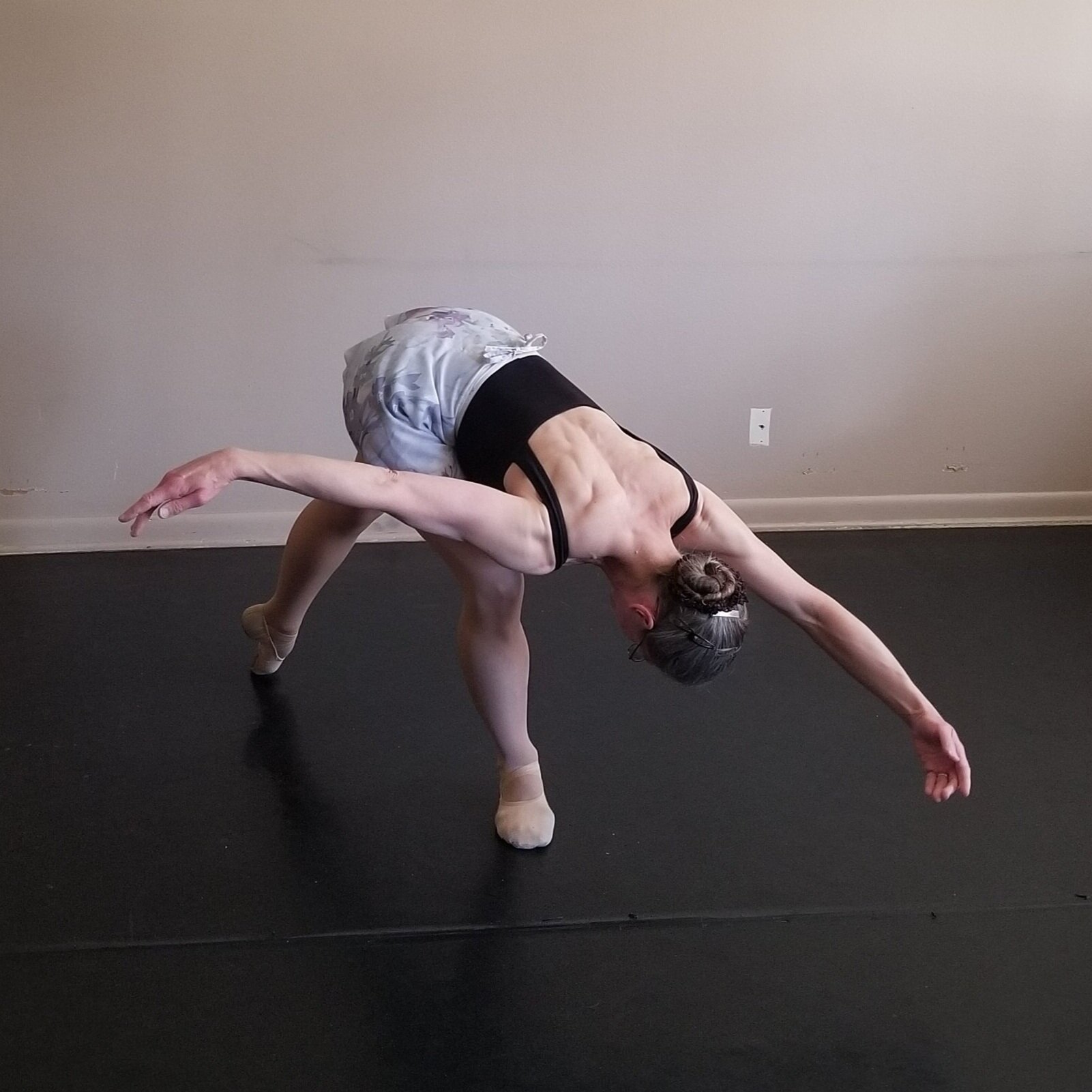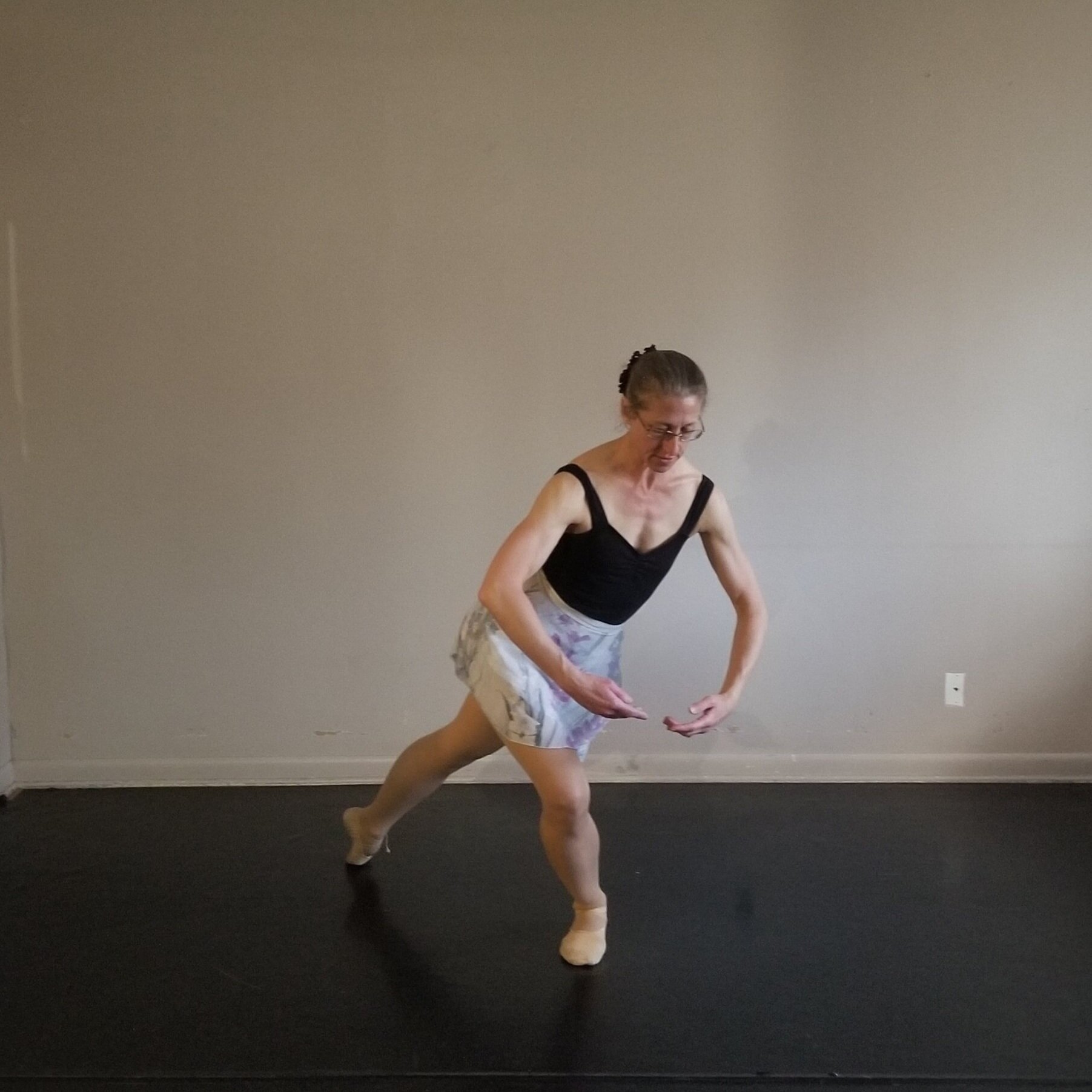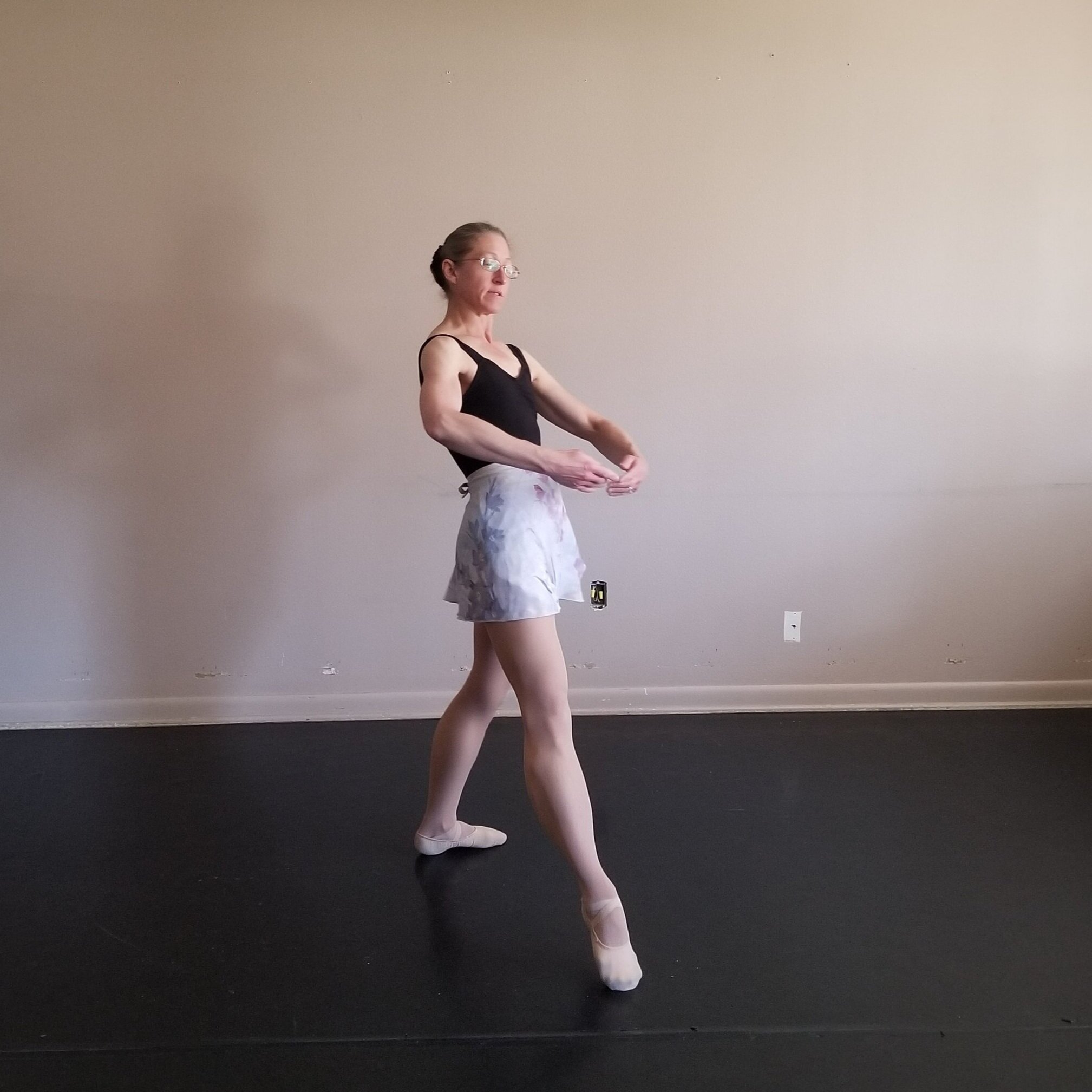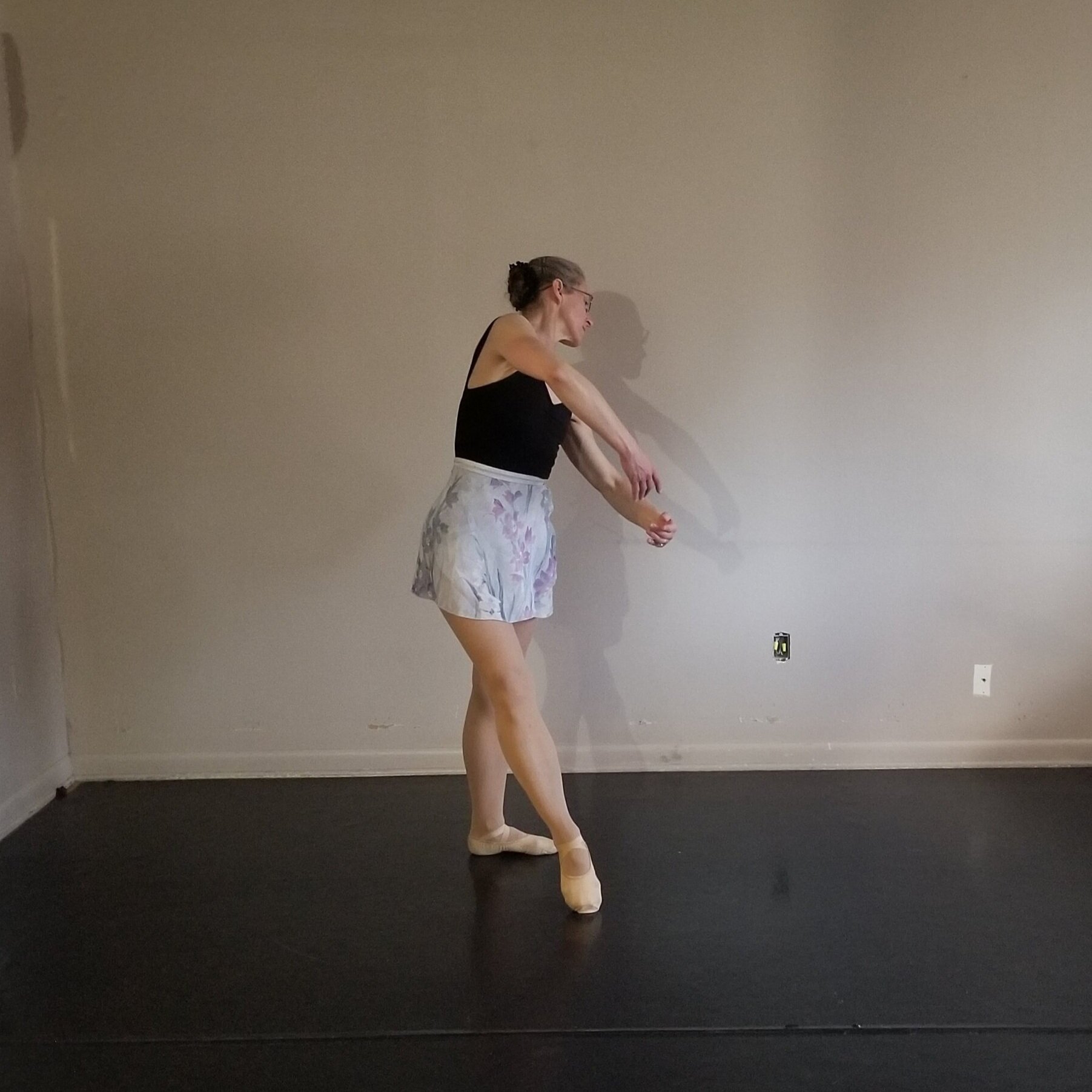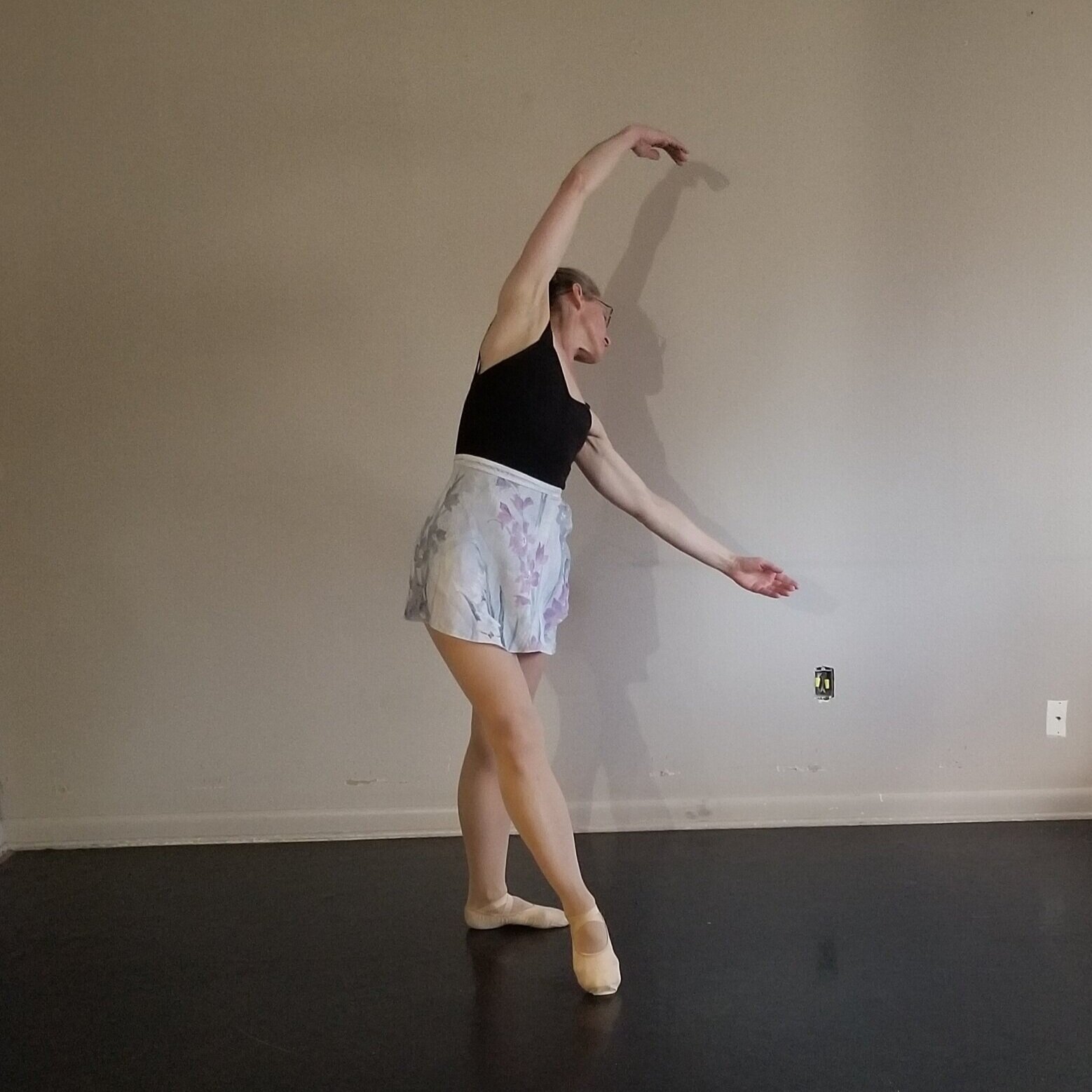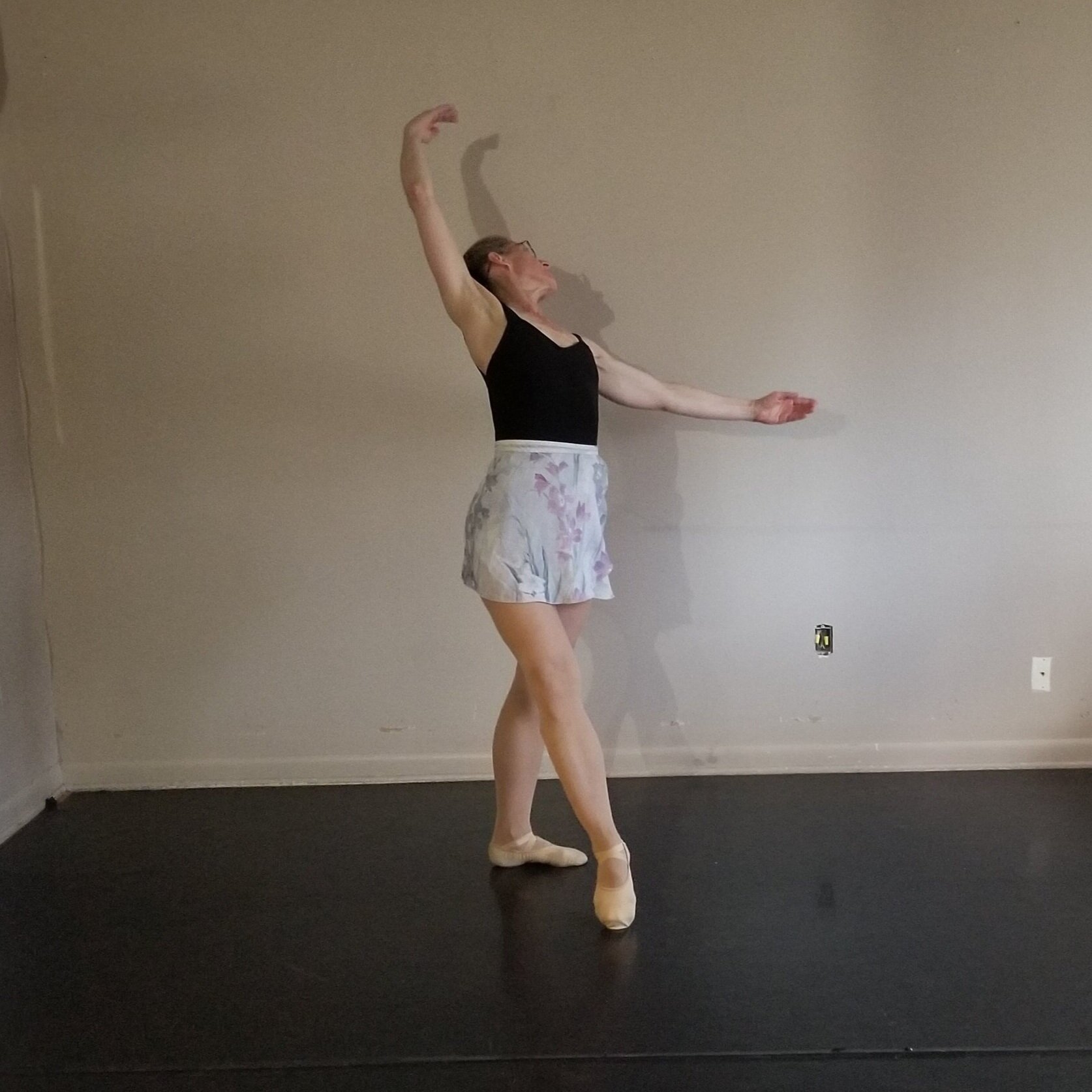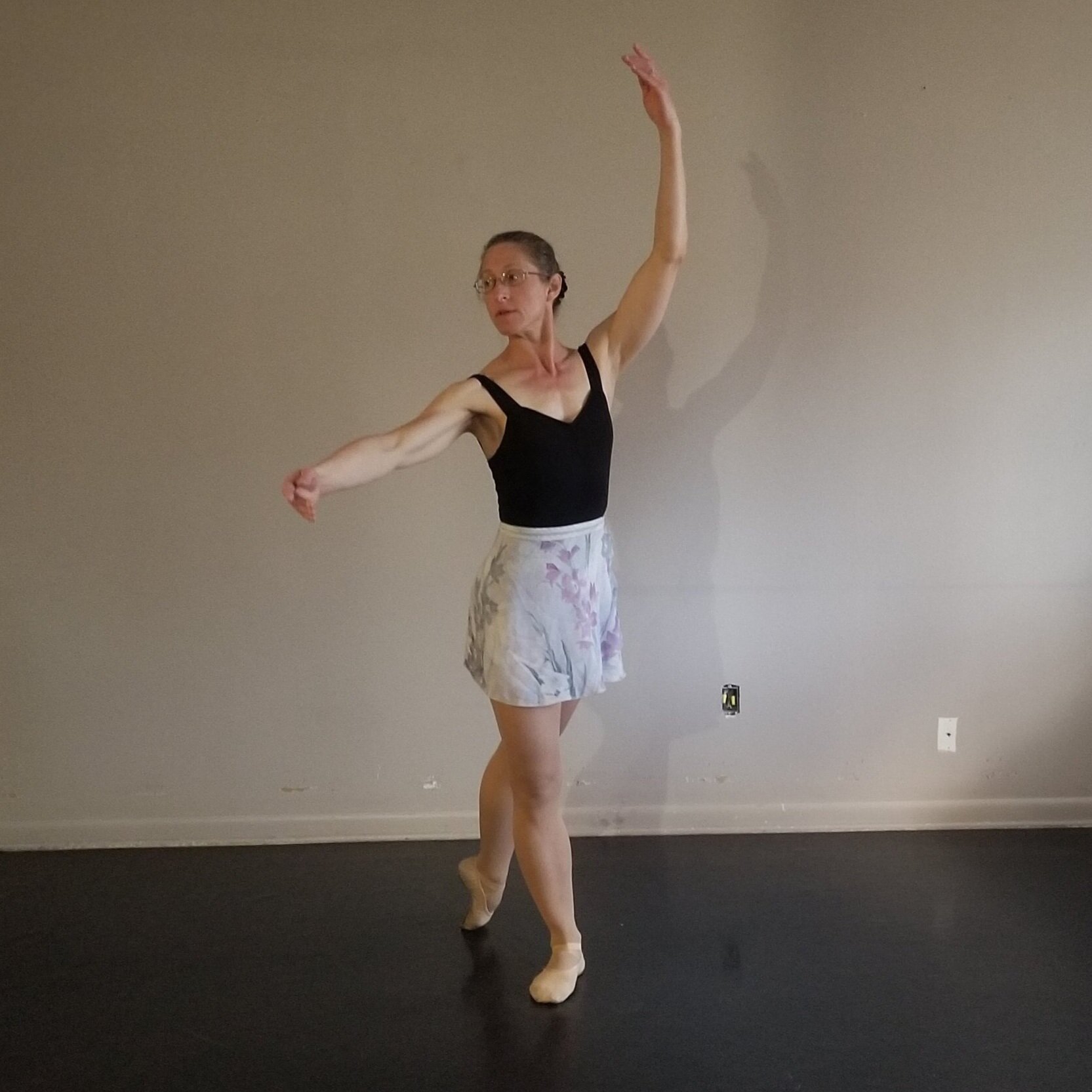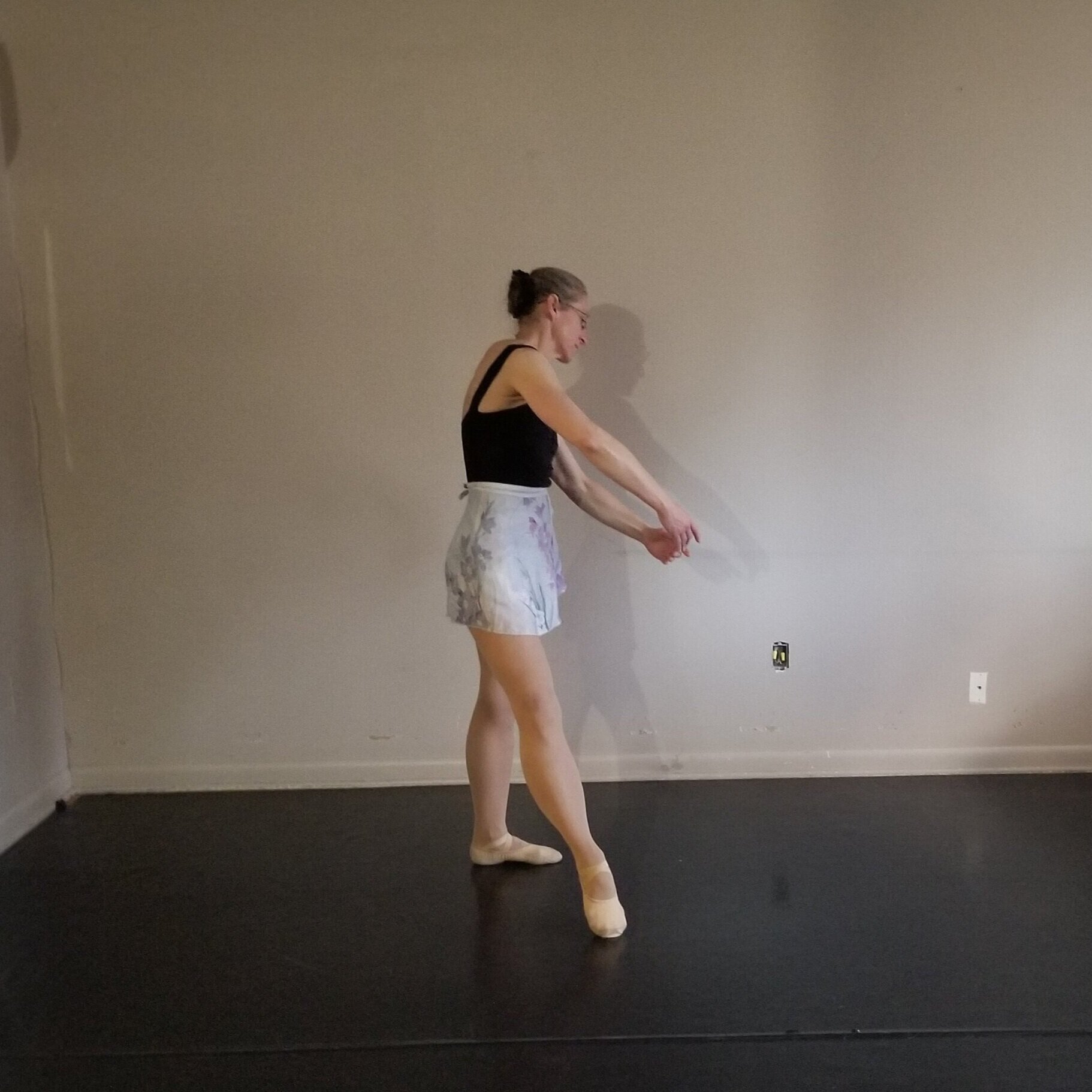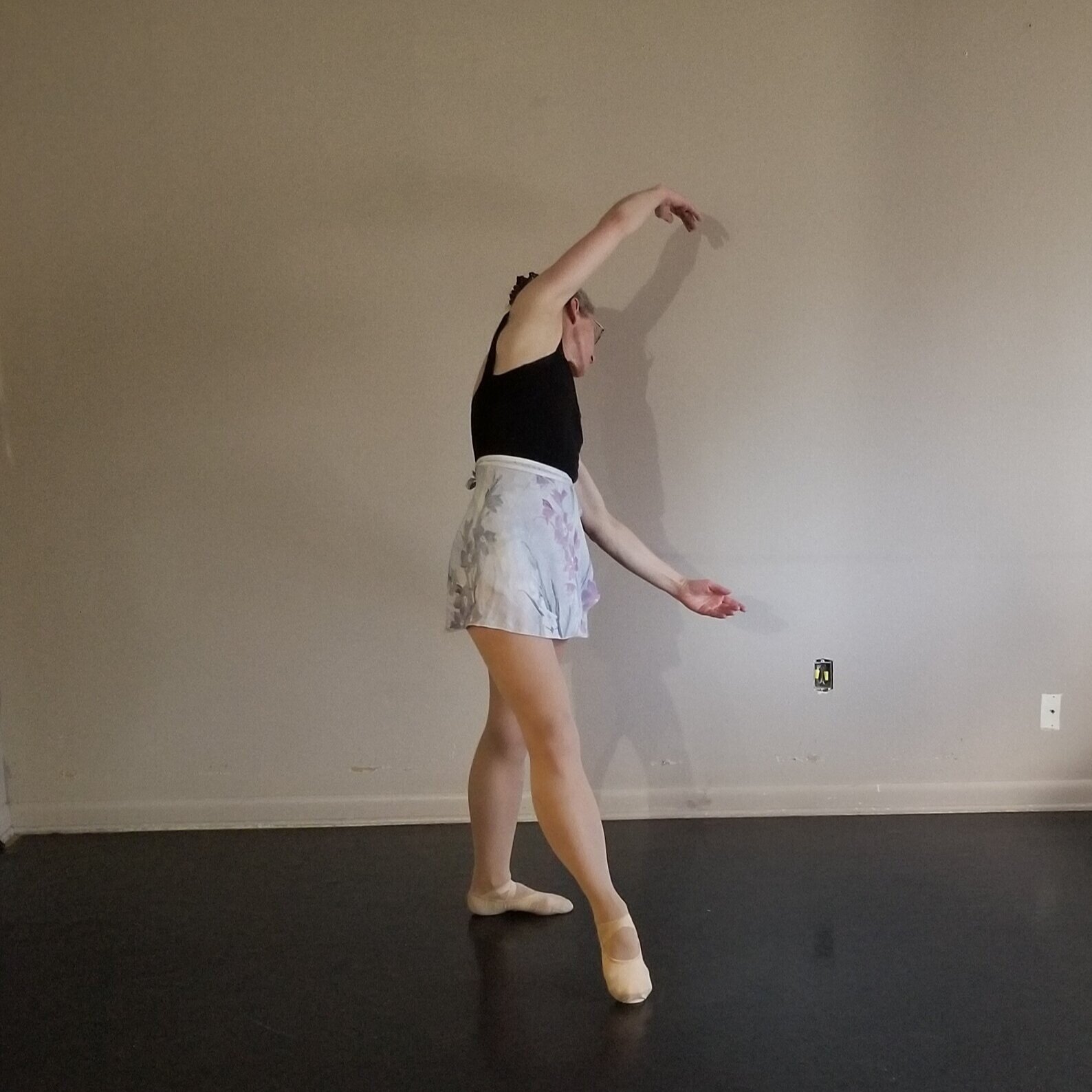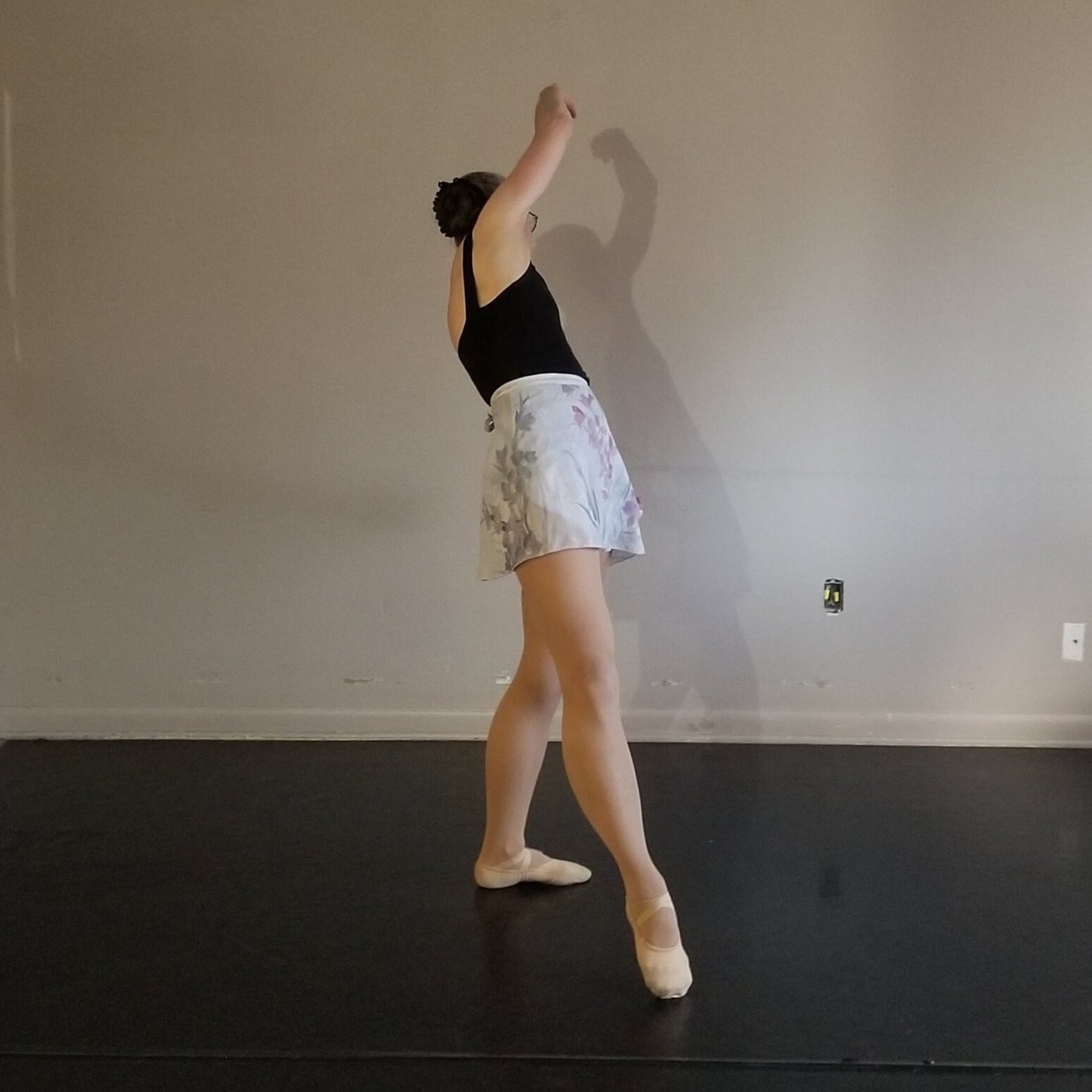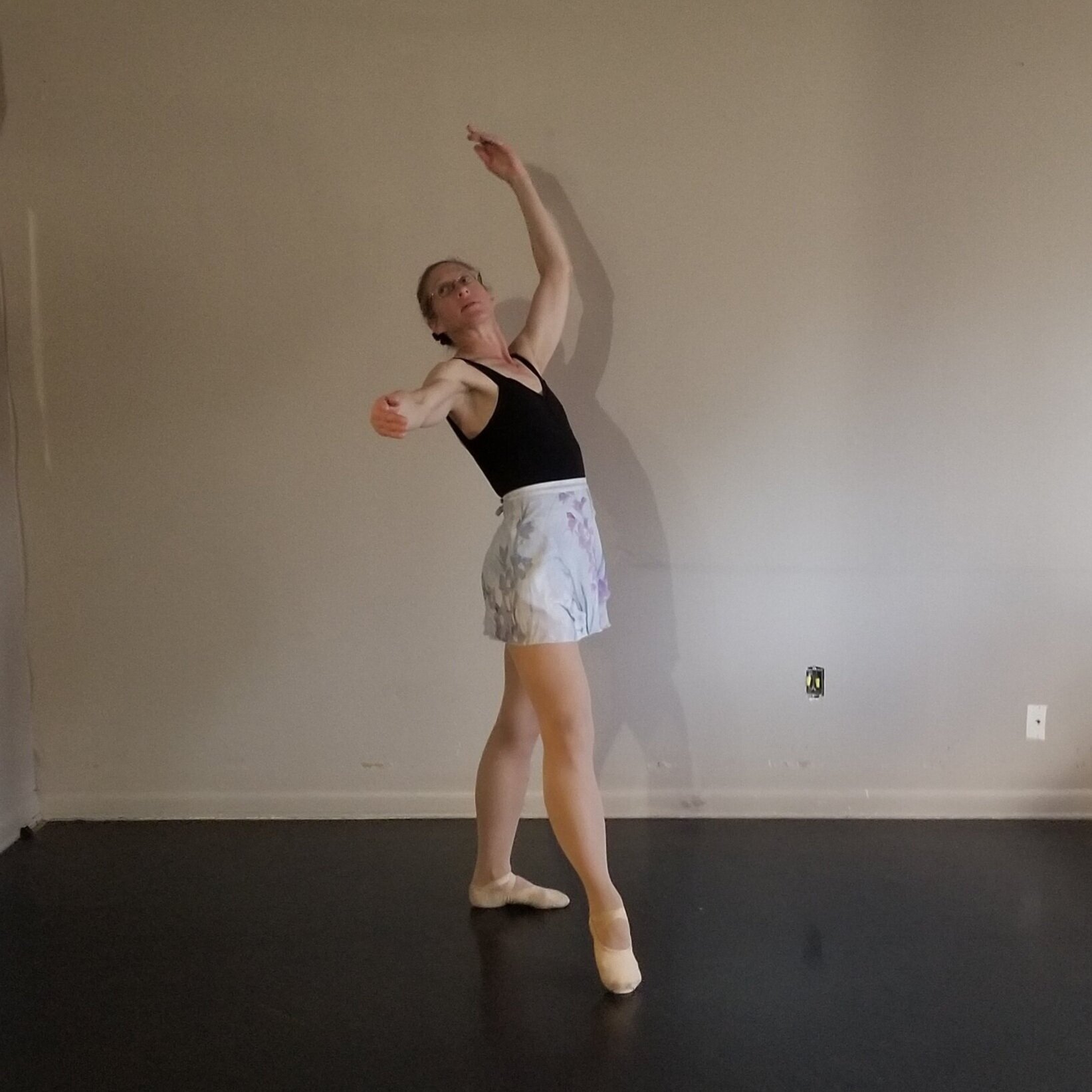Vaganova Sixth or "Grand" Port de Bras
The final established Vaganova port de bras exercise is naturally the most complex and the most difficult to execute. It takes everything learned in the previous port de bras exercises and adds the challenge of using the legs. This exercise is also known as “grand port de bras.” The upper body and arms do much the same as they do in Vaganova 5th port de bras while the legs take the dancer into a deep lunge forward and then a strong push onto the back leg to a tendu croisé devant.
By way of preparation, the dancer will often begin with a temps lié forward, arms moving from preparatory through 1st, arriving in tendu croisé derriére with the upstage arm in 3rd and the downstage arm in 2nd, with the focus downstage, head inclined slightly back. From here, the dancer lifts the focus up and out in the direction the body is facing with a slight lift of the sternum and chin (as in the beginning of 5th port de bras). Then the dancer’s back leg slides down into a deep lunge while the body bends forward into a diagonal line that is continuous with the back leg from the top of the head through the toe of the back foot. Simultaneously, the arms may move into 1st position upon arriving at the full depth of the lunge (School of Classical Dance by Kostrovitskaya & Pisarev p. 143), or the dancer may keep the arms in the extended 3rd and 2nd positions during this entire portion of the port de bras (Basic Principles of Classical Ballet: Russian Ballet Technique by Vaganova, p. 49). In either case, the dancer must be careful not to hunch the back or shoulders, and not to allow the hips to pike upwards creating an inverted V-shape. The dancer also must take care not to sink into the supporting hip.
After achieving the full depth of the lunge, the dancer forcefully pushes back onto the back leg to arrive in tendu croisé devant. While pushing back, the leg which is to be the new standing leg must not bend and the dancer should be striving to push back as far as that back leg was in the lunge. At this point, the dancer must be very careful that the front leg and hip are well placed in tendu croisé devant. The hip must not be allowed to shift forward. There should be no weight on the front foot in the tendu. The arms are in 1st position here.
Remaining in tendu croisé devant, the dancer executes the rest of the port de bras as was done in 5th port de bras. As the body bends upstage at the waist, the downstage arm rises to 3rd and the upstage arm opens to 2nd. The focus here is downward over the upstage shoulder. As the body arches back (with strongly engaged back muscles and waistline), the arms switch places while the head and focus change to the downstage shoulder. Then the body recovers to vertical while the head remains inclined back, upstage arm in 3rd and downstage arm in 2nd. During all of this, the legs and hips must maintain their stability and turnout. The port de bras often concludes with a temps lié forward into the starting position of tendu croisé derriére.
Distortions caused by misaligned hips during the second half of sixth port de bras
Vaganova Grand Port de Bras! Try it yourself!



